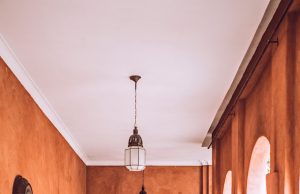Looking for some ways to make your home as eco-friendly as possible? These 10 tips might just help…
When you’re buying a home, there is a huge amount to consider. Now, with sustainability becoming more and more part of our lives, thinking about eco-friendly homes is just one more consideration to add to the list.
Your London property law solicitors will be able to help you find an eco-friendly property to satiate your craving for green alternatives. That said, it’s not always so easy, which is why adapting your current home, or any home you purchase, to make it eco-friendly might be a better option.
In this article, we’re going to give you 10 ideas for making any home that little bit more sustainable. Take a look…
1. Solar Panels
Starting with the most obvious eco-friendly option, solar panels can be added to your home as part of your aim to go green. Although they are pretty expensive to install initially, the benefits really do speak for themselves.
Not only do they provide electricity to your own home, but the energy produced within your panels can then be sold to the National Grid to power other buildings. So, despite the initial hefty cost, you’ll be sure to make back the money, and then some, over time” explains solar panel lead generation company Prism Marketing Group.
2. Insulation
Another way to save costs, and the world, from your electricity use is to ensure your home is properly insulated. This will help to improve the energy efficiency within your home, keeping any heat in, and reducing your need for heating appliances.
There are a number of ways you can do this, but some actionable ideas to help you get started could include:
- Draft excluders on doors and in chimneys
- Filling skirting and floorboard holes with fillers
- Adding strip insulation to your loft hatch
- Making use of the government Green Homes Grant
3. Double or Triple Glazing
One thing that experts always recommend is adding glazing to your windows. Although this can be an initially expensive task, the cost-saving and energy-saving benefits speak for themselves. What’s more, the Green Home Grant mentioned above can help to subsidise the costs for this.
4. Consider Eco-Friendly Heating Options
Even if you insulate your home, you’ll still require heating for those colder winter months. So, why not invest in some eco-friendly options?
Underfloor heating is a good place to start, as it’s a very efficient way to heat up a room. Otherwise, some other options could include ground-source heat pumps, air-source systems, or wood-fuelled systems.
A lot of these options do require a fair bit of forward-planning and investment, however, so can only really be considered if you’re building or renovating.

5. Reclaim and Reuse
A very popular past time for many these days is to reuse old materials or furniture to vamp up their home. Heading to your local charity shops, or joining a local Facebook group where people give items away, is the way forward with this. You can find some amazing gems on there!
What’s more, if it doesn’t quite suit your décor of choice, you can always enjoy a stint of DIY. Grab a sander and some paint and you can turn any old object into something worth keeping around. This will minimise your waste entirely, saving the world from another IKEA chest of drawers ending up in the tip.
6. Try Sustainable Decorations
The materials we use to decorate, including paints, varnishes, and oils, aren’t particularly great for our environment. That said, with the rising demand for sustainable solutions, there’s now a myriad to choose from.
Starting with eco-paints, these are water-soluble, and made using plant oils, resins, and natural dyes. What’s more, waxes and varnishes for any wooden pieces can also be sourced.
Not only this, but you can also access sustainable wallpapers, made using cotton, hessian, and wool! There really is something for everyone, which is much better for our world.
7. Consider Hemp Building Blocks
If you’re planning on building your home from scratch, or renovating parts of your house, you could consider hemp building blocks for the structure. These are blocks made entirely from hemp, and you can also use Hempcrete to cement them in place too.
Although it is a bit more expensive per square foot, hemp is becoming more sought after as a building material. This is because, not only is it 100 percent natural, it has a lot more to offer, including:
- Thermal regulation
- Humidity regulation
- Fire resistance
- Sound regulation
- Completely natural
8. Transition to Smart Heating
Our world of technology brings us so many accessible sustainable options for our daily lives, and smart heating is one of these. Smart heating gives you the option to heat each room at different levels, and this temperature regulation is absolutely key. One degree of heating can reduce energy use by as much as 10 percent!
In fact, by using smart HVAC (heating ventilation air conditioning) controls, the average energy consumed for space heating can be reduced from 60 percent to as much as 25 per cent.

Ready to Start Making Eco-Friendly Adaptations to Your Home?
As you can see, there are a number of avenues you can consider when it comes to creating your dream green home. Of course, there are many more ways you could consider, but these are just some places to begin.
Good luck with making your home as green as can be!














